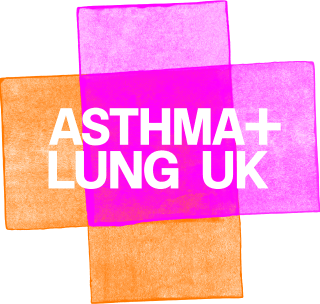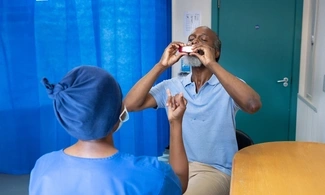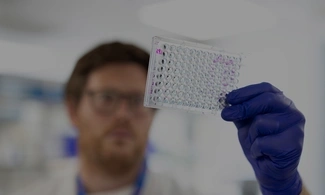NG245 One Year On
Our new report marks one year since the publication of the updated asthma guideline (NG245) and assesses initial progress across the UK. It outlines changes in how asthma is diagnosed and managed, highlights early improvements in care, and identifies where challenges remain - so we can understand what is working, and what still needs to change.
Executive summary
- Resource and funding shortfalls persist: Despite broad consensus about the positive value of NG245, inadequate resources and insufficient funding remain serious barriers to its implementation. These limit the guideline’s potential to deliver high-quality asthma care, with negative knock-on effects for patient outcomes, especially in poorly resourced areas and for children and young people.
- Stepwise diagnostic pathway delivers clarity, but access gaps remain: The introduction of a clear stepwise pathway for diagnosis has made the process more robust and clinician-friendly, reducing unnecessary referrals. Clinicians report heightened confidence in diagnosing asthma and a decrease in primary care referrals to secondary care for confirmation, which bolsters patient flow and supports timely treatment. However, widespread lack of access to FeNO and spirometry testing threatens this progress, often resulting in delayed diagnoses and poorer outcomes in some settings.
- Treatment pathways (AIR/MART) drive “game-changing” improvements: The shift to Anti-inflammatory Reliever (AIR) and Maintenance and Reliever Therapy (MART) regimes marks a decisive move toward evidence-based combination inhaler use. Where well supported, patients report improved satisfaction and adherence to treatment, less relapse to older regimens, and overall better asthma control. The early impact includes reduction in harmful SABA (short-acting beta-agonist) prescribing and modest improvements in exacerbation rates— reflecting improved clinical outcomes and patient safety. However, many patients are not well supported when they switch inhalers, and this was thought to undermine the change and cause knock on problems such as poor treatment adherence.
- Positive outcome signals despite varied implementation: Clinicians observed reduced asthma exacerbations and hospitalisations for newly diagnosed patients over age 12, correlating with reduced use of SABA inhalers and increased adoption of appropriate combination therapies. These improvements are particularly notable where local implementation has strong clinical leadership and commissioner engagement. In successful areas, patients are more likely to receive correct medication on discharge, personalised action plans, and dedicated follow-up, leading to better management and long-term control.
- Ongoing challenges in out-of-hours and paediatric care: interviewees identified ongoing issues with inappropriate SABA prescribing in out-of-hours settings, which undermine progress made elsewhere. Children and young people still face sizeable gaps in access to recommended diagnostics (especially FeNO), risking exclusion from best-practice pathways and perpetuating inequalities.
- Upskilling clinicians and patient support critical to sustainability: Sustained improvement in patient outcomes hinges on upskilling clinicians to ensure shared decision-making, gold-standard inhaler switching care, and continuous training. Both patients and clinical staff benefit where dedicated resources for education, training, and follow-up are in place, driving better engagement, adherence, and advocacy for change within the system.
- National coordination required for full impact: While progress is tangible in “best practice” localities, national consistency remains elusive. Participants called for collaborative learning, data-driven leadership, and renewed national investment in diagnostics, training, and implementation monitoring to fully realise the guideline’s benefits across all regions and patient groups. The introduction of a Modern Service Framework for respiratory conditions would be a clear way to take forward this more coordinated approach.
Recommendations
- Reduce significant patient risk and improve asthma care by fully implementing NG245:
- Making ICS-formoterol inhalers the standard care for adults and children aged 6 plus.
- Ensure everyone with asthma who is discharged from acute care, including in primary care for an acute event, has their inhaler technique reviewed and corrected, is treated with MART or AIR where appropriate, and is given a Personalised Asthma Action Plan.
- Ensure people with asthma who have had two or more emergency department or hospital admissions or exacerbation in a 12 month period are referred for specialist review.
- Ensure health systems provide access to comprehensive diagnostic testing within primary care, in line with NG245, by improving access to key tests for all adults and children:
- Providing access to point-of-care FeNO testing in all Primary Care Networks (PCNs). This is essential for the optimal diagnosis of asthma in children and young people, and improved access will also have benefits for adults.
- Maintaining funding for ongoing FeNO costs, including for paid, protected staff training, consumables such as mouthpieces, and FeNO machine maintenance.
- Commissioning quality assured spirometry services, ensuring every health system has adequate access and sufficient capacity to support their local population.
- Expanding quality assured spirometry provision for diagnosing asthma in children and young people to ensure access improves alongside spirometry access for adult diagnosis.
- Upskill clinicians to improve their competence and confidence in taking a thorough clinical history.
- Upskill clinicians in out of hours settings to urgently stop inappropriate SABA prescribing, ensuring all adults presenting because of asthma are prescribed a MART regime where appropriate.
- Support the guideline’s recommended changes to prescribing by upskilling clinicians to provide goldstandard inhaler switching care. Health systems must:
- Ensure all switching is done through shared decision-making so that no patients has their inhaler switched without informed consent.
- Provide in-person inhaler technique guidance alongside any switch: every patient must be shown how to use their new inhaler.
- Arrange and complete clinician-initiated follow-up appointments within four to eight weeks after a person’s inhaler is switched.
- Asthma + Lung UK should continue to directly support people with asthma to navigate this period of change in asthma management.
- Asthma + Lung UK should work with stakeholders, including BTS, NICE and SIGN, to support and progress guideline implementation.







